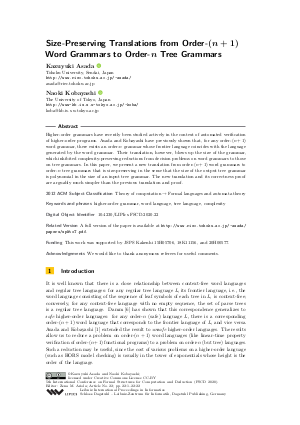@InProceedings{asada_et_al:LIPIcs.FSCD.2020.22,
author = {Asada, Kazuyuki and Kobayashi, Naoki},
title = {{Size-Preserving Translations from Order-(n+1) Word Grammars to Order-n Tree Grammars}},
booktitle = {5th International Conference on Formal Structures for Computation and Deduction (FSCD 2020)},
pages = {22:1--22:22},
series = {Leibniz International Proceedings in Informatics (LIPIcs)},
ISBN = {978-3-95977-155-9},
ISSN = {1868-8969},
year = {2020},
volume = {167},
editor = {Ariola, Zena M.},
publisher = {Schloss Dagstuhl -- Leibniz-Zentrum f{\"u}r Informatik},
address = {Dagstuhl, Germany},
URL = {https://drops-dev.dagstuhl.de/entities/document/10.4230/LIPIcs.FSCD.2020.22},
URN = {urn:nbn:de:0030-drops-123440},
doi = {10.4230/LIPIcs.FSCD.2020.22},
annote = {Keywords: higher-order grammar, word language, tree language, complexity}
}

 Creative Commons Attribution 3.0 Unported license
Creative Commons Attribution 3.0 Unported license
